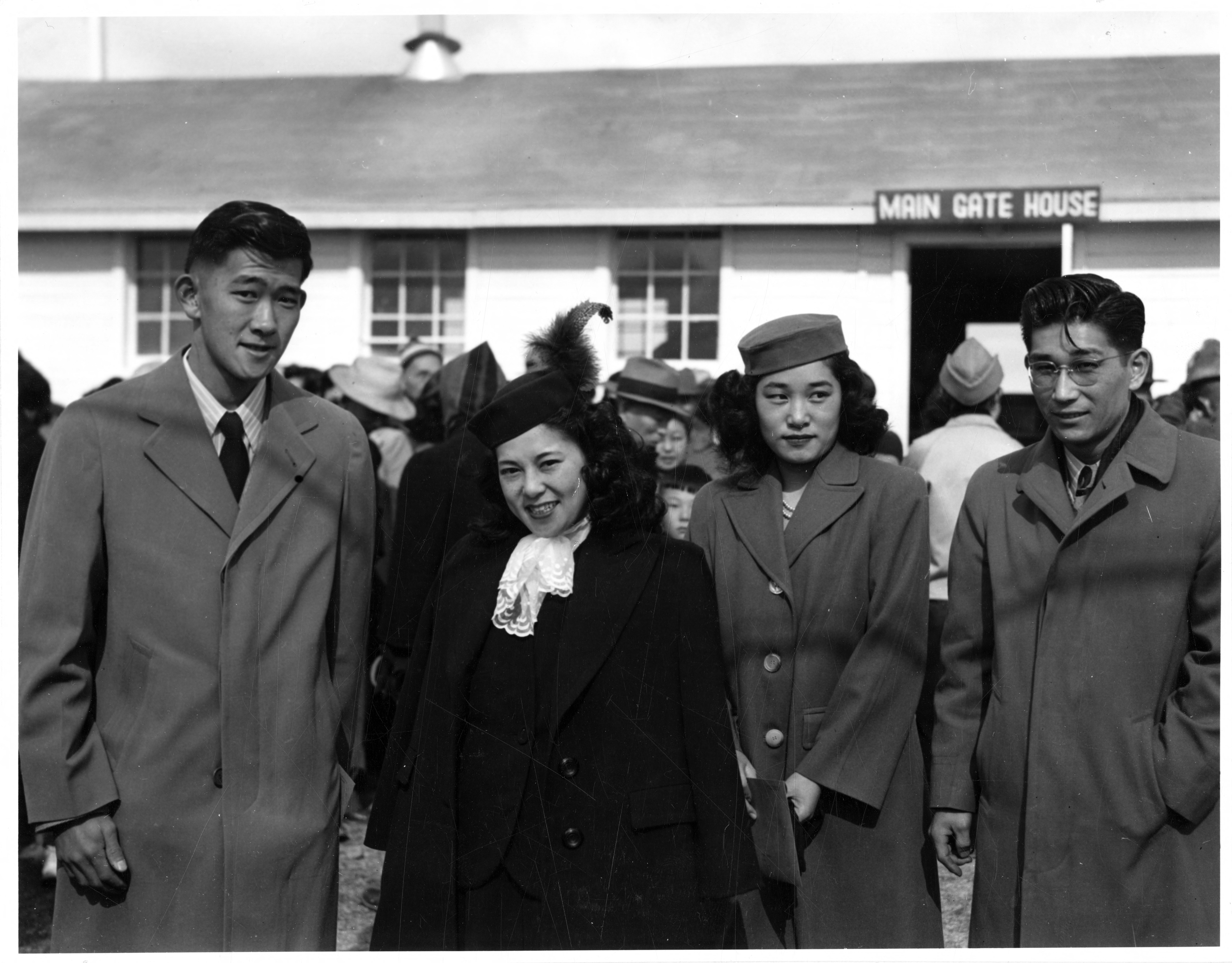A curated reading list. Last updated July 7, 2025.
The Asian American experience in Utah is a complex one. Much of the scholarship dedicated to Asian American histories in Utah, specifically that of Chinese Americans and Japanese Americans, generally focuses on events related to two periods: the construction of the railroad in the nineteenth century, and the Topaz incarceration camp that housed thousands of Japanese Americans during World War II. The first section in this bibliography focuses on the interactions between Chinese Americans and the Utah populace, with multiple sources centered on the rise of Chinese laborers in Utah in the nineteenth century and their subsequent decline. The second section includes sources about Japanese American incarceration at the Topaz War Relocation Center (1942–1945), the concentration camp located in Delta, Utah.
Chinese Americans
Kraus, George. “Chinese Laborers and the Construction of the Central Pacific.” Utah Historical Quarterly 37 no. 1 (Winter 1969): 41–57. Kraus examines how Chinese laborers were central to the success of the Central Pacific’s transcontinental railroad built before the meeting at Promontory Summit, Utah, in 1869. The author argues that the men in charge of the railroad were so impressed with the Chinese workers that they offered financial assistance to some even after the completion of the project. The author focuses on the time period from 1865 to 1869.
Lansing, Michael. “Race, Space, and Chinese Life in Late-Nineteenth-Century Salt Lake City.” Utah Historical Quarterly 72, no. 3 (Summer 2004): 219–38. Adding upon previous theories about the Chinese experience in Utah in the late nineteenth century, Lansing asserts that white residents in Salt Lake City not only segregated themselves socially through factors of race and class but also in terms of physical space and location from Chinese people. The author analyzes Chinese communities in Utah from the 1860s to the end of the century.
Liestman, Daniel. “Utah’s Chinatowns: The Development and Decline of Extinct Ethnic Enclaves.” Utah Historical Quarterly 64, no. 1 (Winter 1996): 70–95. In this essay, Liestman attempts to uncover the factors that contributed to the eventual demise of Chinatowns in Utah, with the last remnants of the enclaves removed by the mid-twentieth century. The author argues that they disappeared from the state due to Utahns’ fear of competition in the labor market and racist beliefs against Chinese people. The time period ranges from the late nineteenth to the mid-twentieth century.
Merritt, Christopher W., et al. “Rolling to the 150th: Sesquicentennial of the Transcontinental Railroad.” Utah Historical Quarterly 85, no. 4 (Fall 2017): 352–63. The authors present a long view of the history of the transcontinental railroad and its building, completion, and eventual transition into an artifact. They assert that although the railroad is no longer in use, it can best be remembered by traveling to the now-vanished towns where Chinese laborers lived and worked. The time period of the article focuses on the 150 years since the railroad’s inception.
Japanese Americans
Butler, Wendy. “The Iwakura Mission and Its Stay in Salt Lake City.” Utah Historical Quarterly 66, no. 1 (Winter 1998): 23–47. In this article, Butler discusses the Japanese delegation that traveled to the West, its unplanned sojourn in Salt Lake City, and the city’s ultimate failure to impress due to religious, political, and other conflicts. The author argues that the Iwakura Mission’s stay in Salt Lake City was not simply a humiliating episode in Utah history, but rather a decisive factor toward treaty negotiations. The article focuses on a two-week period in December 1872.
Heimburger, Christian, Jane Beckwith, and Donald K. Tamaki. “Remembering Topaz and Wendover.” Utah Historical Quarterly 86, no. 2 (Spring 2018): 148–60. This compilation of essays address the significance in 2017 of the opening of the Topaz Museum in Delta, Utah, and an exhibit at the Wendover Airfield Museum featuring a crane by Sadako Sasaki, a survivor of the atomic bomb dropped on Hiroshima. The authors assert that although these instances shed light on a dark period in US history, they can also provide a sense of healing and hope.
Uchido, Yoshiko. “Topaz, City of Dust.” Utah Historical Quarterly 48, no. 3 (Summer 1980): 234–43. Uchido, a Japanese American evacuee during World War II, shares her poignant and powerful personal experience of life at the Topaz War Relocation Center located near Delta, Utah. The author describes in stark detail the harsh conditions of the camp, the many struggles she and her family faced within the barracks, and her eventual ability to relocate out of the camp in 1943. The time period of the article ranges from February 1942 to May 1943.
Wilson, Marian Robertson. “Wanda Roberston: A Teacher for Topaz.” Utah Historical Quarterly 69, no. 2 (Spring 2001): 120–39. In this article, Marian Wilson discusses the life and career of Wanda Robertson, a white woman who left a career as a university professor to educate children at the Topaz War Relocation Center during World War II. In the two years she spent at the camp, Robertson established new programs, increased student participation, and helped gather more supplies for students in the camp. The time period centers on Robertson’s time at the camp from 1942 to 1944.

